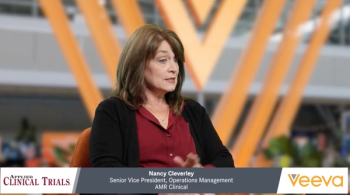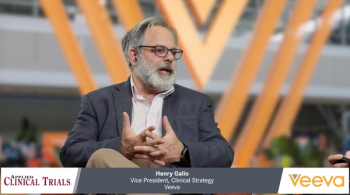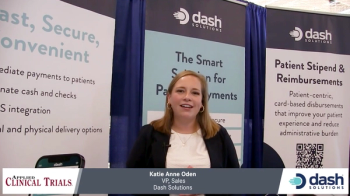
DIA 2023: Measuring Impact of Patient Engagement Across Research and Development
DIA 2023 session focuses on taking patient feedback, how to implement them into trials, and measuring the impact they have on processes.
This DIA 2023 session, moderated by Victoria DiBiaso, Global Head, Patient Informed Development and Health Value Translation, Sanofi, opened by expressing how imperative it is to establish research priorities and make development decisions that ensure that the medicines that are developed with the patient data they have. As well as answer the questions that individuals with those conditions and their caregivers and their HCPs are all seeking the answers to. The presentation included live polling of the audience that showed 68% of attendees’ companies are currently engaging patients systematically across their development programs, yet nearly two-thirds of that percentage aren’t measuring the impact. Meanwhile, attendees found that embedding patient feedback into their development processes has the most impact in study design, enrollment, and transparency.
Presenting during the session, Measuring Impact of Patient Engagement Across Research and Development, were Jennifer Kim, PhD, Research Assistant Professor, Tufts Center for the Study of Drug Development; Ellyn Getz, Director, R&D Partnerships, CSL Behring; Douglas Noland, Head of Patient Partnerships, Executive Director, Astellas; and Heather Pin, Head of Patient Centric Operational Effectiveness, Sanofi.
Kim shared the latest phase of a multi-phase, multi-year plan between Tufts CSDD and the DIA, working group comprised of sponsor companies, CROs, patient advocates, vendors, and consultants to map what patient engagement look like across the industry. The group formed a 36-item, multiple choice survey comprised of three different buckets. The first bucket was logistical support, the second gathering input from patients and stakeholders, and finally, feeding that information back to patients. The survey was distributed to eight sponsor organizations of varied sizes, over the course of three months. Some of the most notable findings included a significant difference in perception amongst the senior leaders of their organization. Their companies were providing patients with transparent informed consent process as well as travel and compensation for their time, yet questions pertaining to bridging the patient/scientist gap and feeding information back to patients, scored low. Another low scoring area wasgathering input for KPIs from underrepresented patients.
Getz revealed that patient focus being a core value of their company has driven CSL to use plain language summaries company-wide for all studies. The CSL patient partnerships team embeds their activities in clinical development and operations processes. She said the survey helped them lay out that framework to improve areas such as diversity, patient satisfaction, and site activation engagement. Where they are having the most success right now is in their early study design and planning phase process. Aiming to build on the Tufts/DIA survey, CSL is actively going out to their study teams after conducting patient advisory boards to see if any modifications were made to the design or new activities added to offer further support for participants. They found that around 60% of each of the study teams that offered patient advisory boards (Phase II and III) changed the procedures that they were offering in some way. In 2022, 50%, had changes their type of study visits, offering even more flexible options for participants—30% gave patients the flexibility to decide when they wanted to come into the site, or even have that procedure at their home.
Not all has been smooth sailing, however, some advisors have expressed not wanting to participate in a study that’s too involved because it would be too burdensome for their sites. Getz says the conversations can be hard but that it is necessary to think more creatively about how to bring in crucial patient insights and feedback in conducting the study moving forward. She continued that the modifications that are being shared help validate movement in the right direction.
Another audience poll exposed the biggest challenges when engaging patients in development programs as trust, timelines, education, resources, and management buy in.
Nolan shared an anecdote of Astellas’ patient centricity journey from the bottom 10% to the top 10%. About seven years ago, Astellas had the Chief People Officer of the Cleveland Clinic, evaluates their level of patient centricity, and received a 50-page report with his opinion that they actually weren’t patient centric at all. In actuality, the company was science and marketing centered, as was the industry. Despite having an offering of 62 unique 800 numbers, five tech platforms, and various different systems—what was lacking was training in fundamental areas such as empathy, microaggressions, customer service, and even colorblindness. Having brought that information to their CEO, Nolan boasts that with stronger systems and processes in place, the company’s highest metric on their annual employee engagement survey, is patient centered.
Last to share insights was Heather Pin. Pin shared some metrics from a list of 80 that Sanofi has compiled from speaking with companies throughout the past three years. The objective is to measure the impact of patient insights on product development. She spoke of their corporate and social responsibility to make an impression on patient advisors that they've listened to them, hear what they say, and show them they’ve actually listened and acted upon those insights. “We want to be able to take this information, all this data, and be able to make better recommendations, better decisions. We want to lessen the complexity for the patients, whether it's to make their treatment easier, or to join a clinical trial.”
The process is slow and steady though, Pin put an emphasis on asking the right questions. “The first year, it is the hardest because that's when you're creating the baseline.” A big tip to accomplish this, she said, is to use examples. “Make sure you pass them by several people and roles, different people in those roles to make sure they're crystal clear.” It’s very common to edit these questions as priorities, trends, and company goals change. Pin recommends entering and looking at the data on a regular basis.
DiBiaso built upon Pin’s point adding that the patient relevant information and data is available to be on the label, and that compared to last year, they’re showing 95%, increase in the number of programs that have a strategy in place to try to achieve that. Another company claim, 83% of programs have a clinical outcome assessment strategy in place before starting Phase II. Their few years of tracking also show a 31% reduction of procedures this year compared to last, a significant reduction of burden.
Also mentioned in the session was PALADIN, a consortium dedicated to accelerating new medicines development through optimizing patient advocacy group and industry collaboration. Learn more about PALADIN
The session concluded with an insightful period of Q&A including questions about your compensation policies and practices, using social determinants of health data to inform study design, and how to marry that data with the patient feedback.
Reference
Measuring Impact of Patient Engagement Across Research and Development June 27, 2023. DIA 2023, Boston.
Newsletter
Stay current in clinical research with Applied Clinical Trials, providing expert insights, regulatory updates, and practical strategies for successful clinical trial design and execution.




